The Serbian flag symbolizes the nation’s rich heritage and enduring resilience. It is a visual testament to the country’s historical journey and collective ethos. This flag is not just a national emblem but a reflection of Serbia’s steadfast spirit and enduring cultural legacy.
Flag of Serbia
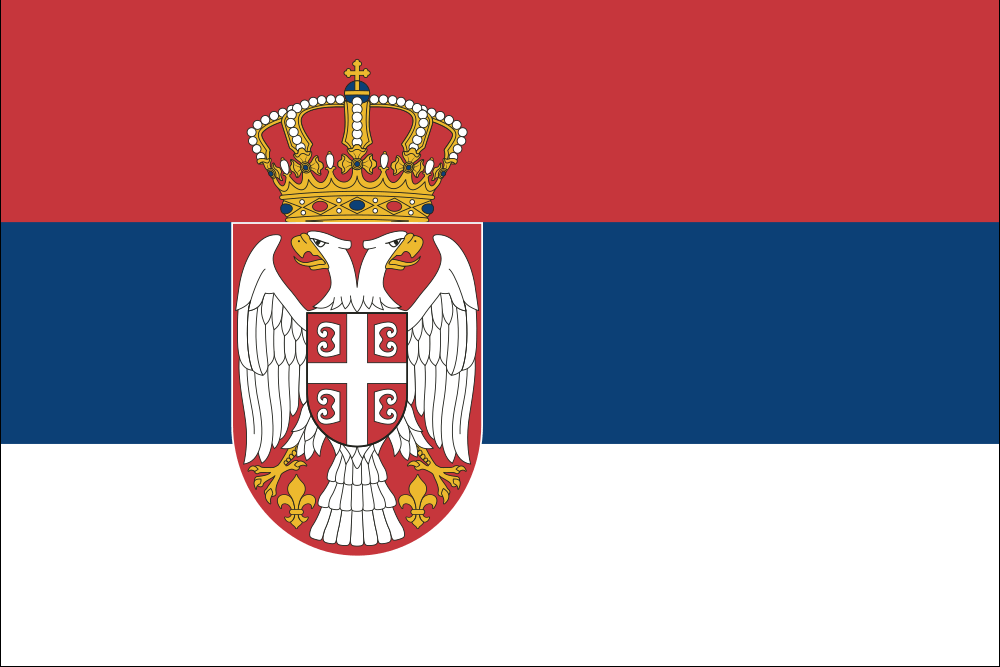
The flag of Serbia presents three horizontal stripes, arranged without specifying their colors, embodying a design that reflects the nation’s history. It features a prominent coat of arms on the hoist side, showcasing a double-headed eagle that resonates with Serbia’s ties to the Byzantine Empire.
Topped with a crown, the coat of arms adds a layer of regality, hinting at the nation’s monarchical roots. While not detailing the coat of arms’ specifics, this flag is a fusion of historical symbolism and cultural significance, capturing Serbia’s unique story.
Flag of Serbia: Color Palette
Serbia Flag Map
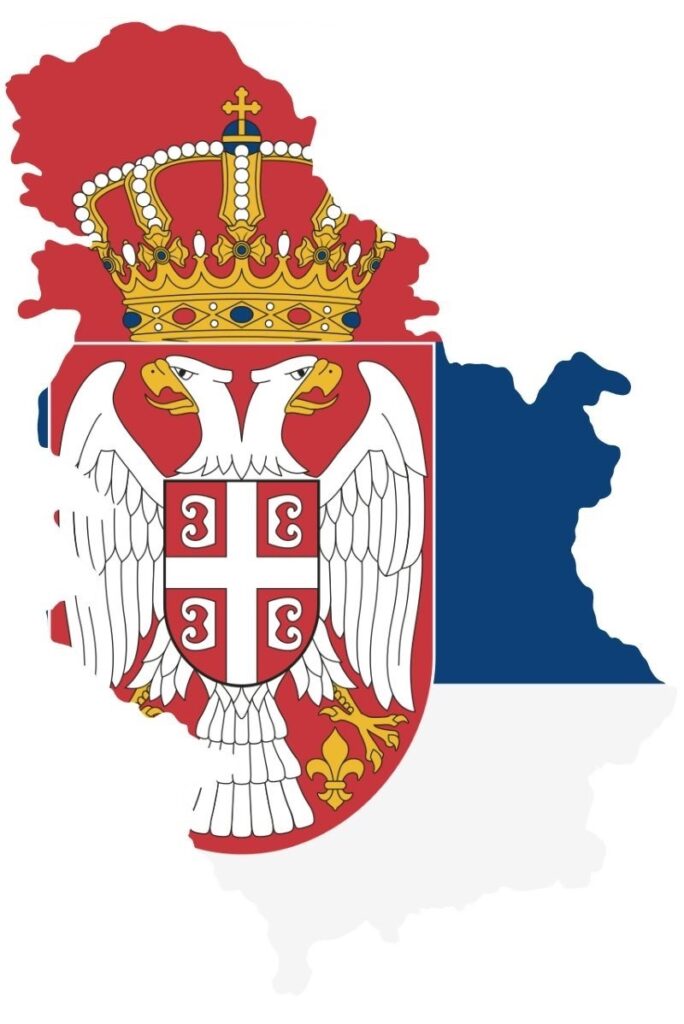
Serbia Flag Emoji: 🇷🇸
The color palette of Serbia’s flag is a carefully chosen set of hues, each holding its own in conveying the nation’s story. These colors are more than mere visual elements; they are carriers of deep symbolism, reflecting the nation’s history, culture, and values.
The following section will delve into the individual significance of each color, unraveling their contributions to the flag’s overall narrative.
Meaning of Each Color
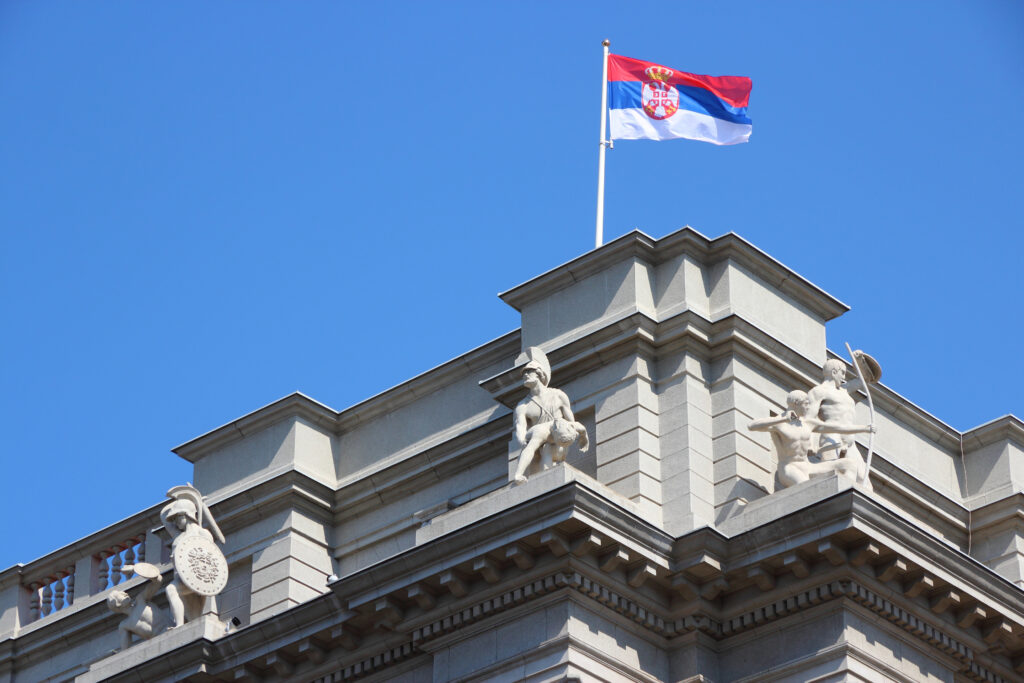
Red
Historically, the red in the Serbian flag symbolizes the bloodshed, revolution, and struggle the nation has endured. This color reflects the resilience and enduring spirit of the Serbian people, commemorating the sacrifices made for the country’s freedom and sovereignty.
In a broader cultural context, red is often associated with strength, vitality, and the life force of a nation.
Blue
Blue in the Serbian flag represents the sky and light, symbolizing hope, freedom, and a brighter future. It’s also associated with fidelity and loyalty, representing the steadfast character of the nation and its commitment to these values.
This color serves as a reminder of the nation’s aspirations and the limitless possibilities that lie ahead.
White
White on the flag is often interpreted as representing purity and honesty. It signifies the integrity and virtuous nature of the Serbian people.
Additionally, culturally, white is seen as mother’s milk, a metaphor for nourishing and strengthening future generations of Serbians. This color embodies the nation’s commitment to nurture and uphold its values and traditions.
Serbian Coat of Arms
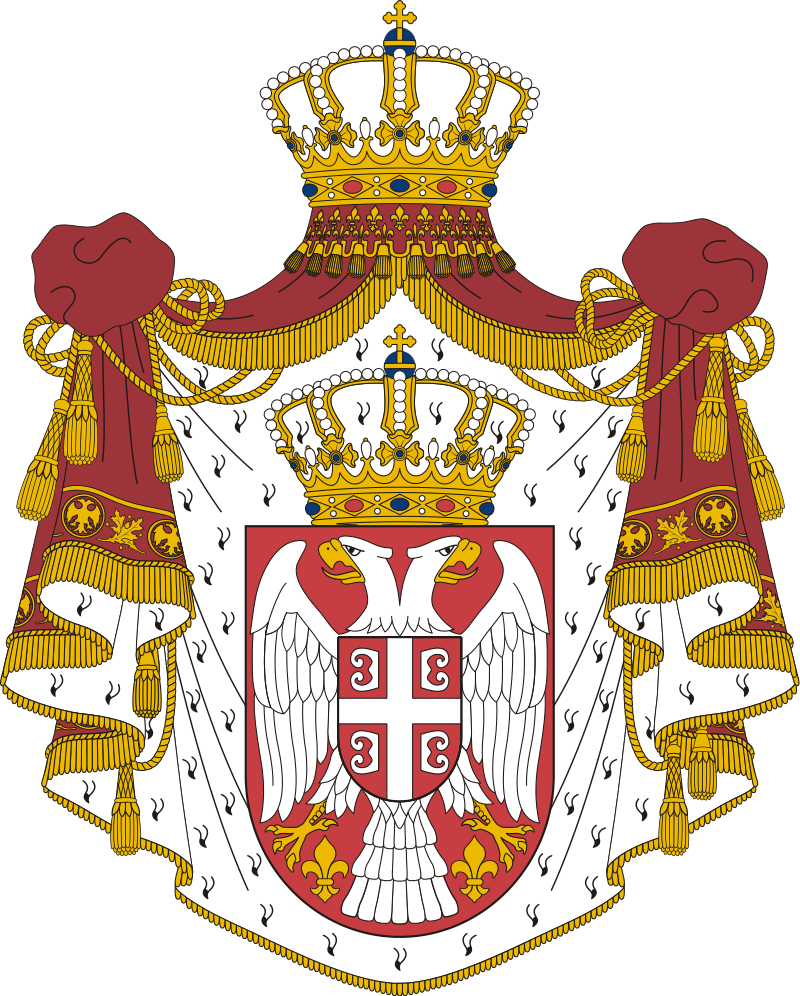
Serbia’s coat of arms is a heraldic emblem rich in historical significance and cultural symbolism. The coat of arms is composed of several key features:
- Double-Headed Eagle: This is the central symbol derived from Byzantine ancestry. The two heads of the eagle signify the duality of power – the spiritual and temporal realms. This symbolizes Serbia’s historic ties to the Byzantine Empire and its influence on Serbian culture and history.
- Crown: Atop the eagle is a crown representing the Serbian monarchy. This feature underscores the historical significance of the royal lineage and authority in shaping the nation’s identity.
- Four C Symbols: Surrounding the eagle are four Cyrillic ‘C’s (or ‘S’s in English), known as the Serbian cross. These symbols are a historic emblem of the Serbian state and are often associated with national identity and religious significance.
- Red Shield: The background shield, predominantly red, echoes the historic flags and emblems of Serbia, symbolizing bravery and sacrifice.
- Fleur-de-Lis: This symbol, located at the eagle’s wings, represents the cultural and historical influence of Western European heraldry, signifying the connections Serbia has had with different European regions throughout its history.
This emblem is a testament to Serbia’s rich mosaic of history and its evolving narrative as a nation.
Historical Evolution and the Meaning Behind Changes
The flag of Serbia has undergone several evolutionary changes over time, reflecting the nation’s history and shifting political landscapes.
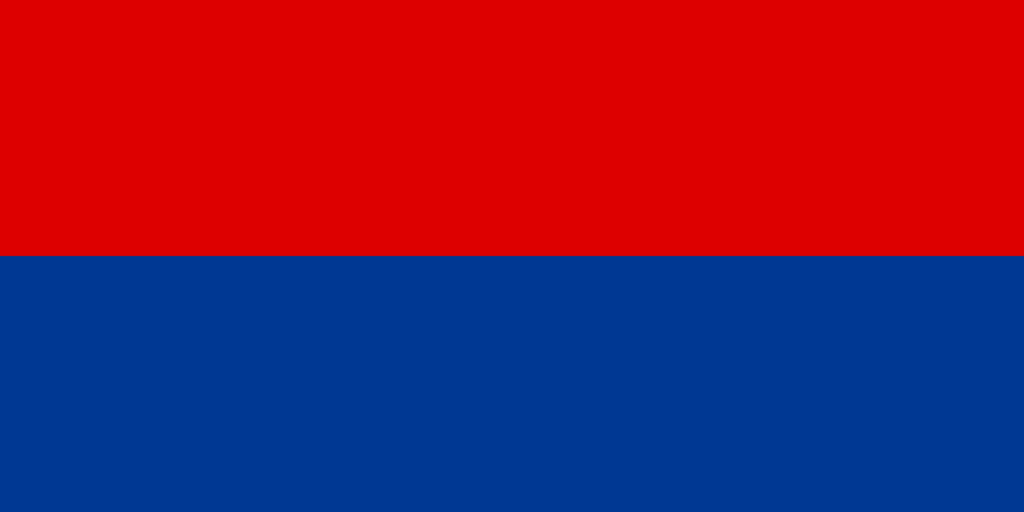
The earliest known Serbian flags, dating back to the medieval period, featured red, blue, and white colors. Red and blue, in particular, were mentioned in historical records from the 13th century. These early flags often used lighter, silk-like materials and were significant in representing the nation during various historical events.
During Ottoman rule, national symbols, including the flag, were significantly restricted. The flags during this period were less standardized, and traditional colors and symbols were limited.
Later, the 19th century marked a significant revival in Serbian nationalism, coinciding with the First and Second Serbian Uprisings.
During this period, the use of the red, blue, and white tricolor was revived, symbolizing the nation’s resurgence and quest for independence. Different variations were used, including flags with additional symbols like crosses or coats of arms.
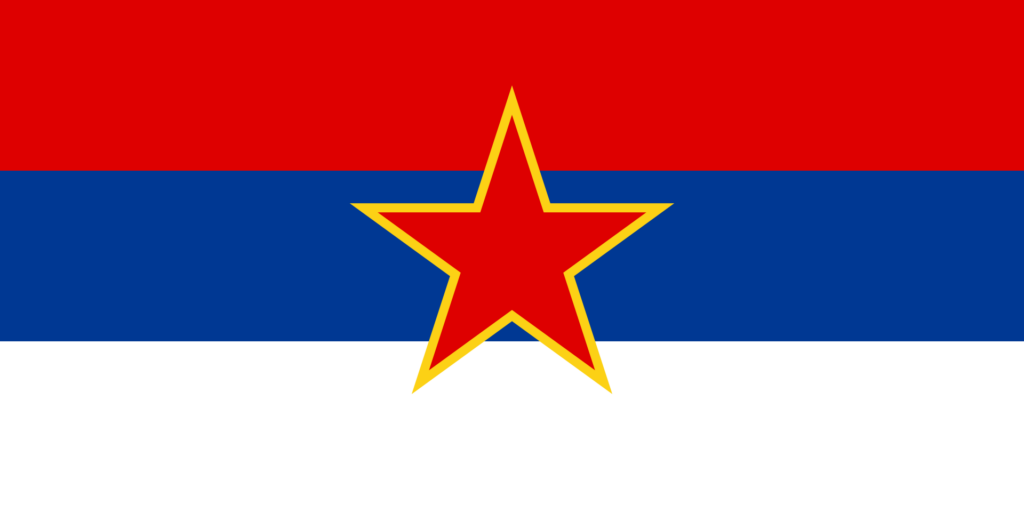
The modern Serbian flag, as we know it today, was officially adopted in the 19th century. The tricolor of red, blue, and white was established with specific meanings attached to each color, reflecting the nation’s struggle.
However, during the 20th century, particularly in the Yugoslav period, Serbia’s flag changed to align with the socialist and federal structure of Yugoslavia. However, the traditional tricolor was still used as a symbol of Serbian identity.
Following the dissolution of Yugoslavia, Serbia reinstated the traditional tricolor as its national flag. With its colors and coat of arms, the current flag signifies a return to traditional values and historical roots, symbolizing the nation’s harmony.
Overall Symbolic Meaning of the Flag
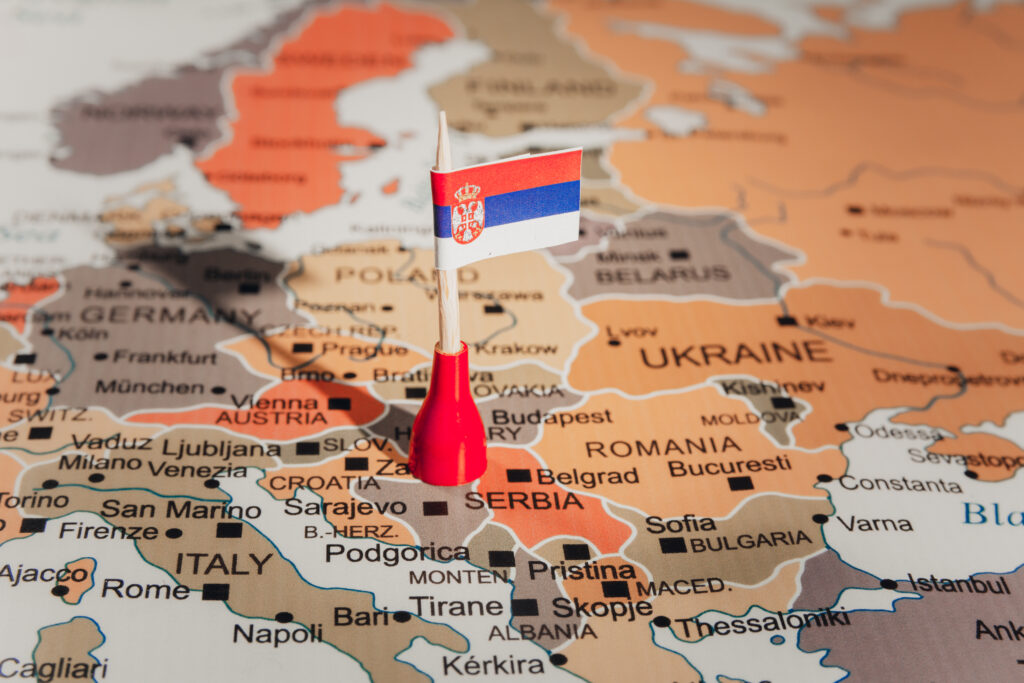
The flag of Serbia is a symbol of national unity, embodying the country’s enduring essence and historical continuity. It merges elements of its origins and sovereignty, reflecting the nation’s journey through various epochs and the resilience and spirit of the Serbian people, symbolizing their unified commitment to national values and collective Serbian character.
Similar Flags to the Flag of Serbia
Let’s compare with other national flags resembling Serbia’s, uncovering the reasons behind their similar designs.
Russia
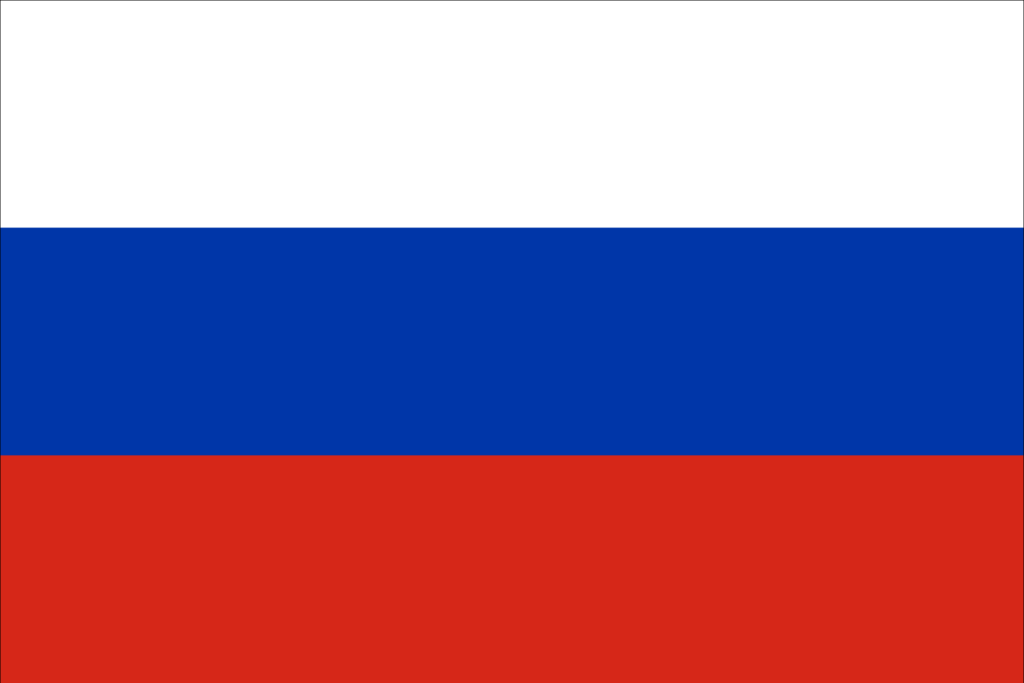
The flag of Russia, with its white, blue, and red horizontal stripes, shares a close visual similarity to Serbia’s flag. This resemblance reflects the two nations’ deep historical and cultural ties, linked by their Slavic and Orthodox Christian traditions.
Additionally, these shared colors signify their mutual participation in Pan-Slavic movements, symbolizing unity among Slavic peoples.
Slovakia
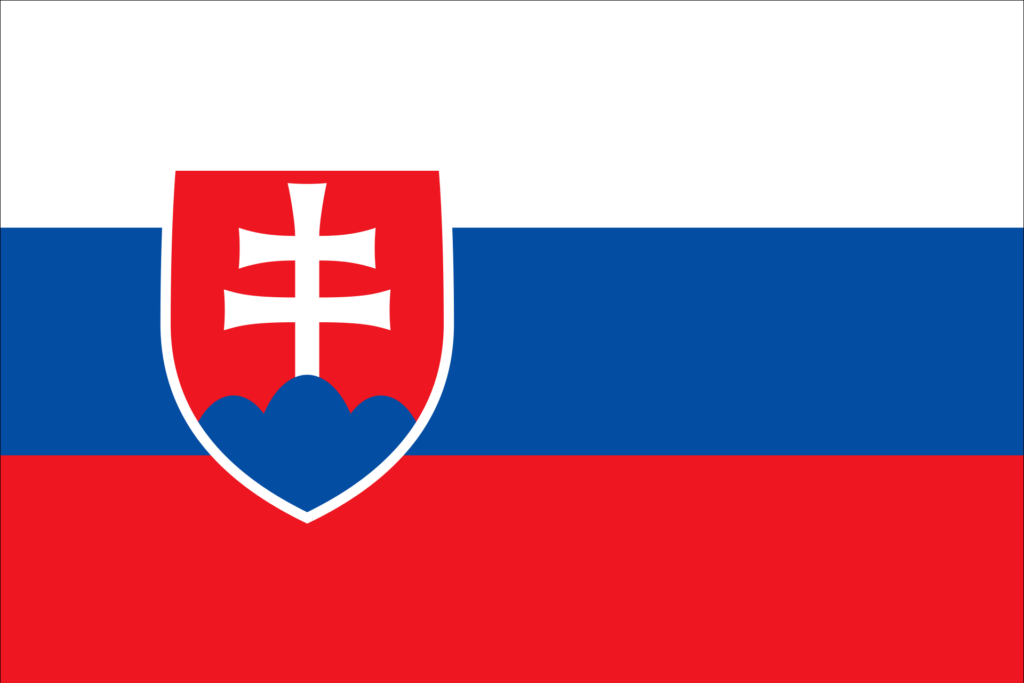
Slovakia’s flag, like Serbia’s, features the white, blue, and red tricolor, but its national coat of arms distinguishes it.
The similarity in the flags’ colors stems from their common Slavic heritage, a testament to the historical and cultural bonds shared among Slavic nations. The presence of national emblems in both flags also signifies a shared element.
Slovenia
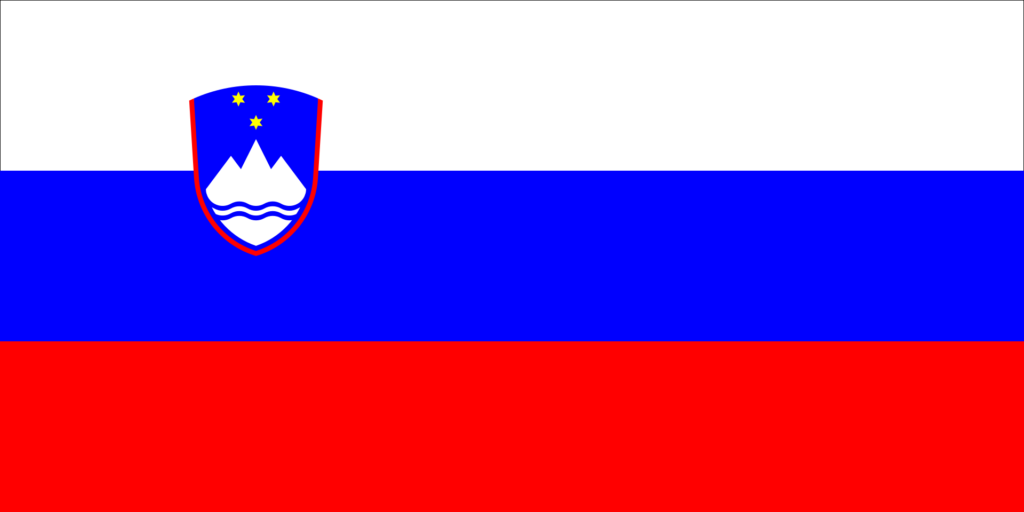
Slovenia’s flag incorporates the same Slavic colors as Serbia’s flag. This shared color scheme symbolizes their intertwined Slavic roots and reflects the collective history and cultural values that bind the Slavic nations.
Both flags convey a sense of unity and common identity among the Slavic countries through their colors and design, highlighting their historical connections and shared cultural heritage.
Final Thoughts
The flag of Serbia, with its distinctive colors and emblem, stands as a beacon of the nation’s enduring values and history, resonating strongly with its citizens. It holds a unique position in the global mosaic of flags, symbolizing Serbia’s identity and the shared pride of its people.
Image Sources and Copyright Information
- Serbian Flag Flying Above Building: © Tupungato/Shutterstock
- Serbian Flag Pin on Map: © GR.Stocks